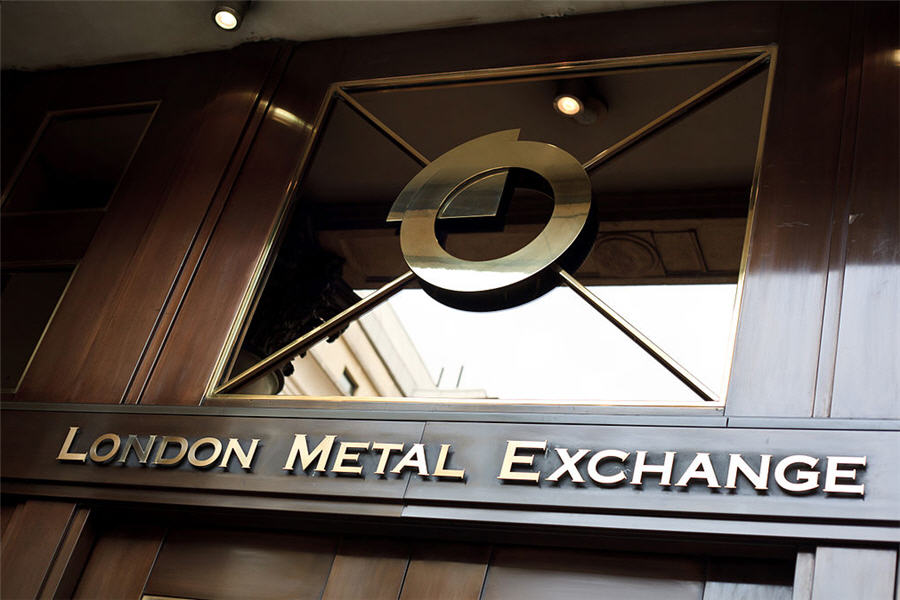Home: London Metal Exchange ring will return, but for how long?

(The opinions expressed here are those of the author, Andy Home, a columnist for Reuters.)
The shouting will resume on Sept. 6, when the nine ring-dealing members of the London Metal Exchange (LME) take their red leather seats after more than a year’s coronavirus-induced break.
It is an unexpected outcome.
When the LME proposed closing the 144-year old bastion of open outcry trading in January, few in the metals trading community expected it to survive.
But industrial users have rallied around the ring. The exchange received an unprecedented 192 responses to its discussion document, mostly from the physical side of the market and mostly negative.
It’s not just the ring. Trade users don’t think much of the LME’s other proposed changes either. A “disaster” was how Liangmin Gu, head of the London office of Chinese state trading company Minmetals, described the plan to switch margining methodology.
The common concern among industrial users, often smaller companies with limited balance-sheet muscle, is that they are being pushed aside in favour of bigger financial players with their promise of increased exchange volumes.
So the LME’s backed down.
Sort of.
The ring returns, but under potentially much reduced circumstances. It feels more like a stay of execution unless there’s a radical rethink about how open outcry fits into the LME’s curious ecosystem.
Split pricing
The LME remains convinced “that electronic pricing for reference price generation will result in improvements to the integrity of the reference price, through an increase in direct participation and enhanced transparency.”
But the exchange has politically snookered itself. When Matthew Chamberlain took over as LME chief executive in 2017 after an earlier bruising battle between modernists and traditionalists, he pledged that the first of the exchange’s “guiding principles” would be to “protect those features that are core to the LME’s market and its physical user base.”Report ad
So the change to margining will be watered down and the official prices, set half way through the trading day and referenced by the supply chain in its physical contracts, will return to the ring.
But not the end-of-day closing prices, which are more important for financial players and which have experienced much broader participation since the LME was forced to suspend the ring in March last year.
If open outcry is going to stay, as so many of the LME’s industrial users want, it will have to evolve
At first sight this might seem a sensible split in pricing. After all, the LME’s physical user base isn’t much interested in the closes and financial players are even less interested in the official prices.
The number of participants in the closing copper session rose from an average of four to 42 after the suspension of the ring and the switch to electronic price discovery. Participation in the official ring session, by contrast, increased by just one and was unchanged in the case of nickel, lead and tin.
However, the question for the nine ring-dealing members is whether the permanent move to electronic price discovery of the closes undermines the financial case for bearing the extra costs of a floor team.
Suspended sentence?
There will now be a further consultation on the LME’s proposed split in referencing pricing.
It comes with a sting in the tail.
The exchange proposes a new rule that would allow it unilaterally to move the official price discovery session from ring to screen in the event that the number of ring dealing members falls below six or their share of volumes falls below 75%.
If such a “ring price liquidity event” were to occur, the exchange would be “under no obligation to reverse” a decision to switch to electronic pricing even if the causes of that “event” no longer applied.
The consultation is open to all members and interested parties, but again it poses the hardest questions of the nine companies seated around the ring.
Adapt and innovate?
Can the LME ring survive with just one reference price role? Could it survive if the official prices followed the closing prices onto the screen?
It seems unlikely.
If open outcry is going to stay, as so many of the LME’s industrial users want, it will have to evolve.
The ring still has an important role to play in negotiating the multiple arbitrage opportunities afforded by the exchange’s unique rolling date structure.
Interestingly, a separate LME proposal to push more inter-office transactions onto its electronic platform has run into opposition from members arguing that large orders split across a large number of prompt dates need “bespoke negotiation”.
If such parts of the LME system require human contact, then could more of that business flow through the ring?
It’s possible that other complex parts of the LME system could find a more natural home on the ring. The LME options committee has looked several times over the years at whether open outcry could enhance what many feel is an underpowered part of the market-place.
More fundamentally, the ring needs more than nine members if its survival is to last and, given the current debate, it seems highly unlikely that anyone is considering joining the hallowed few.
The answer could be opening up ring-trading to locals, the sole traders who once populated the floors of all the major exchanges.
There are a number of former LME floor traders who would be happy to return but who can’t because their employers won’t bear the corporate costs of ring-dealing membership.
Ironically, there have always been the LME equivalent of locals operating in the more obscure parts of the date structure but because of the membership structure they always traded by telephone or by screen.
That’s a radical suggestion for the current ring incumbents but if they and their supporters among the physical supply chain want to keep open outcry, it’s going to be up to them to come up with a solution.
The LME for its part will focus on enhancing its electronic closing price methodology and fine-tuning its proposed fee changes to encourage more screen trading.
The exchange still “considers that the longer term direction of travel for financial markets is towards electronic trading and pricing.”
Which leaves the onus on rethinking the ring on those who have rushed to its rescue.
“LME participants have demonstrated their ability to adapt, innovate and find new ways to service their clients’ needs (…) over many decades and in the midst of great technological changes,” the exchange noted, adding it “believes that this will continue”.
Now might be the time for some of that fabled adaptation and innovation.
(Editing by Mark Potter)
{{ commodity.name }}
{{ post.title }}
{{ post.date }}

Comments